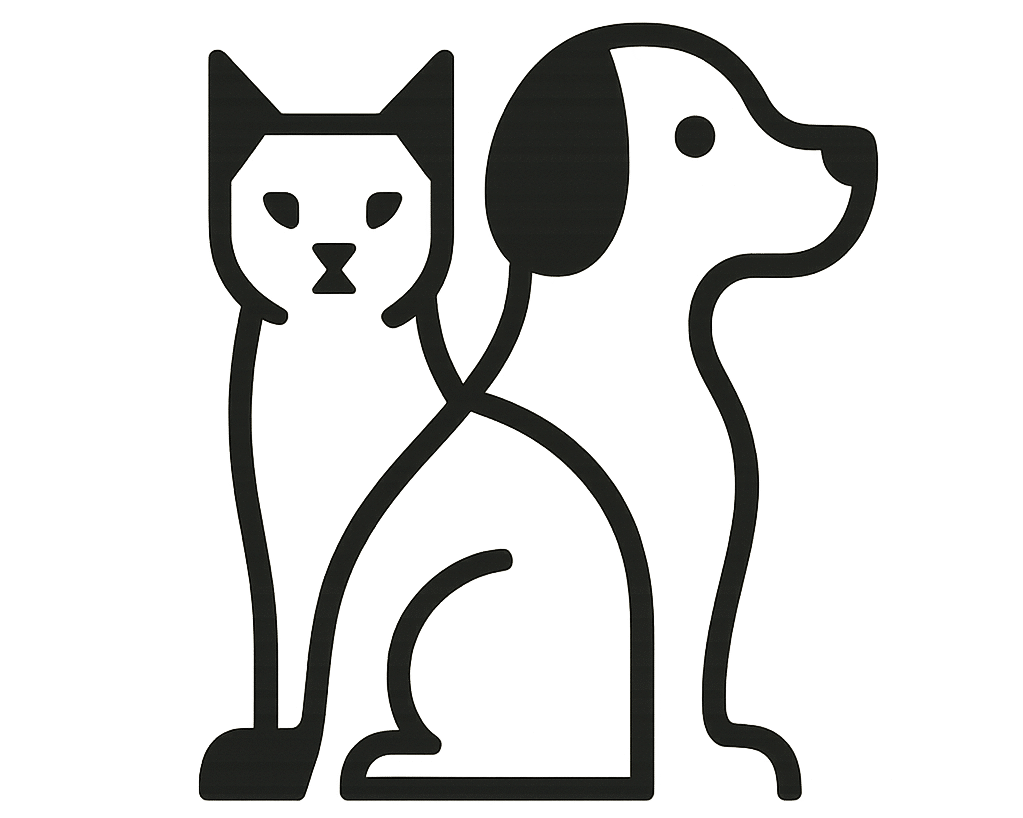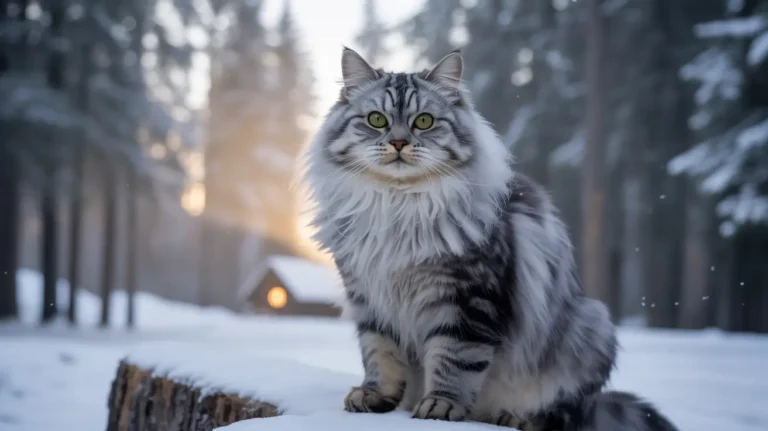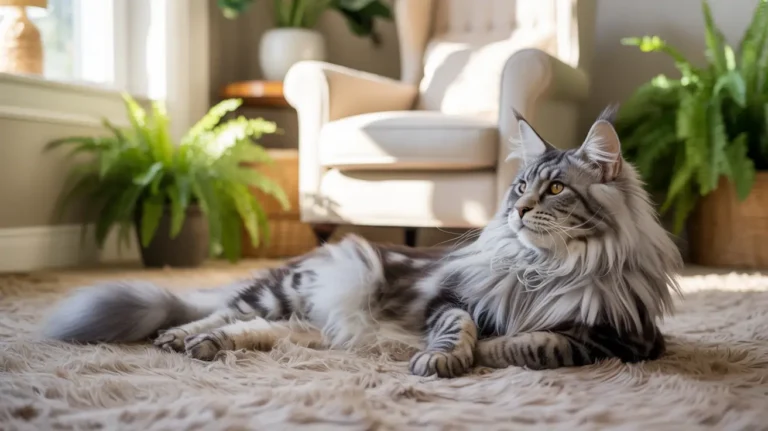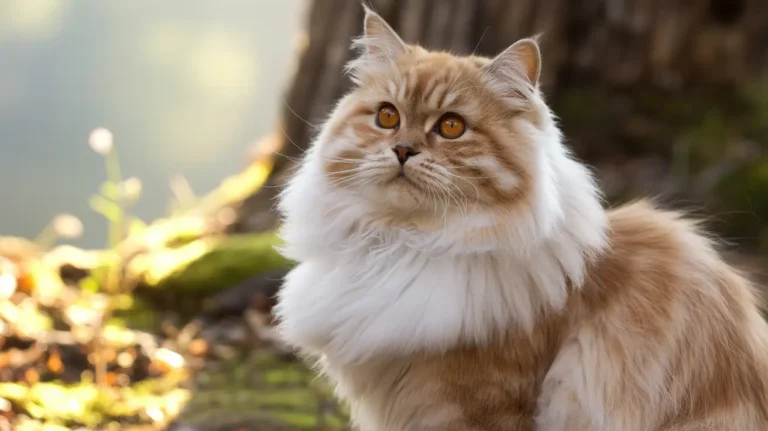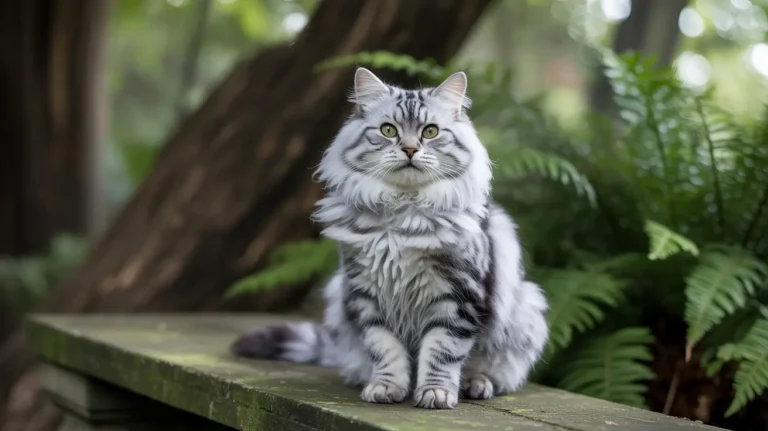Siberian Cat Appearance: A Closer Look at Their Traits
The Siberian cat has a strong body with a broad chest and firm muscles. Even though it is big, it moves easily and can jump very high. It climbs trees and explores high places with ease. These skills helped it survive in the cold and snowy forests of Siberia.
This cat grows slowly and reaches its full size at about five years old. It has a round head with soft edges, giving it a kind and friendly look. Its thick, water-resistant coat and strong body make it perfect for cold weather. Even with its strength, it moves smoothly and with grace.
General Body Structure
The Siberian Cat has a sturdy and well-built body with a broad chest and strong frame. Its firm, barrel-shaped torso gives it a powerful Siberian Cat appearance. It has large, rounded paws that help it walk easily on different surfaces. With its muscular build and strong legs, the Siberian Cat is both powerful and graceful in its movements.
Size & Weight
Siberian cats are a medium to large breed with a strong and sturdy body. Males usually weigh between 15 to 20 pounds, while females are slightly smaller. Their thick, long coats make them appear even larger, adding to their majestic look.
Muscular & Sturdy Build
These cats have a muscular build with a broad chest and strong legs. Their powerful back legs are slightly longer than the front, helping them jump high with ease. Their solid frame and well-proportioned body reflect their natural athleticism.
Bone Density
Siberian cats have dense bones, making them heavier than they look. This strong bone structure supports their active lifestyle and gives them great strength and agility.
Growth Rate
They grow slowly and take about five years to reach full size. Most of their growth happens in the first 18 months, but they continue to develop until they are fully mature. This slow growth helps them build strong muscles and a well-balanced body.
Head Structure and Facial Features
The Siberian cat has a broad, well-rounded head that gives it a strong yet gentle appearance. Its head is slightly wider at the top and narrows smoothly toward the muzzle, creating a balanced look.
The combination of rounded features and well-spaced facial elements contributes to the breed’s signature sweet expression. The Siberian cat’s head is a perfect blend of strength and softness, designed to complement its powerful build while maintaining a friendly and expressive look.
Broad and Rounded Shape
The head is medium to large, with a modified wedge shape that appears wider at the skull and gently tapers towards the muzzle. The rounded contours give it a soft yet powerful look.
Forehead and Cheekbones
The forehead has a slight dome, with a nearly flat area at the center. The cheekbones are broad and set low, blending smoothly into the overall facial structure. This gives the face a full, rounded appearance.
Muzzle & Chin
The muzzle is short, well-developed, and rounded, adding to the cat’s balanced profile. The chin is firm and slightly rounded, providing a strong foundation to the face.
Whisker Pads
The Siberian cat has well-defined, rounded whisker pads that give the face a slightly puffed look. These pads enhance the overall expression and add to the breed’s distinct charm. The broad lower jaw and well-spaced canine teeth create a wide, rounded muzzle.
Facial Profile
The forehead transitions smoothly into a slight dip at the middle of the nose, leading to a straight nose that enhances the cat’s elegant and well-balanced appearance. The Siberian’s forehead is flat at the top with a gentle rise at eyebrow level.
Siberian Cat Eye Shape and Colors
Siberian cats are known for their captivating eyes, which add to their expressive and charming appearance. Their eyes are medium to large, almost round, and slightly slanted at the corners.. These cats come in various eye colors, with some having rare and striking shades.
Common Eye Colors
Siberian cats can have a range of eye colors, but the most common ones include:
Rare and Unique Eye Colors
While most Siberians have green, gold, or copper eyes, some have rare variations:
Eye Shape and Expression
Eye Placement
Coat Color and Eye Color Relation
Unlike some cat breeds, a Siberian cat’s eye color is not directly linked to its coat color. However, certain coat patterns, like solid white or those with white markings, are more likely to produce blue or odd-colored eyes. Regardless of coat color, Siberian cats always have beautiful, clear, and vibrant eyes that contribute to their unique charm.
Siberian Cat Ear Shape and Features
The Siberian Cat appearance is highlighted by its unique ears that make them look alert and expressive. Their ears are medium-sized with rounded tips and are placed to match their broad head. Some Siberian cats have small tufts of fur on their ears, making them look fluffy and wild.
Size and Shape
Ear Position
Ear Tilt
Ear Furnishings
Lynx Tipping
Ear Coat and Fur
Siberian cats’ ears are perfectly designed to suit their natural environment while adding to their beauty. Their well-placed, rounded, and slightly tufted ears give them a unique and charming appearance.
The Beautiful and Fluffy Tail of the Siberian Cat
The Siberian cat’s tail is one of its most eye-catching features. It is thick, fluffy, and slightly shorter than its body, giving the cat a well-balanced look. The tail is not just for beauty—it also helps the cat stay warm and maintain balance while moving.
Perfectly Balanced Length
Strong and Sturdy Base
Soft and Thick Fur Covering
A Natural Winter Blanket
Tail Movement and Expression
The Siberian cat’s tail is more than just a beautiful feature—it plays a vital role in warmth, balance, and expression. Its soft, thick fur and elegant shape make it one of the most distinctive parts of this stunning breed.
Strong Legs & Agile Build
The Siberian cat has strong, muscular legs that support its powerful and agile body. Its hind legs are slightly longer than the front legs, giving it an advantage in jumping and climbing. This natural athleticism makes Siberians excellent hunters and playful companions.
Large, Well-Tufted Paws
Siberian cats have large, rounded paws with tufts of fur between the toes. These furry tufts help them walk on snow and rough surfaces, providing both warmth and grip.
Key Features of Legs & Paws
Maine Coon vs. Siberian Cat: Key Differences
Maine Coon cats are large, muscular, and have long, bushy tails that match their body length. They have a square-shaped head, high cheekbones, and a broad chest, giving them a powerful appearance. Despite their size, they are friendly, playful, and love human interaction, making them great family pets.
Siberian cats, on the other hand, have a more rounded body with a slightly shorter tail. Their head is softly contoured with a short, rounded muzzle. They have a luxurious coat and a gentle personality, often forming strong bonds with their owners.
